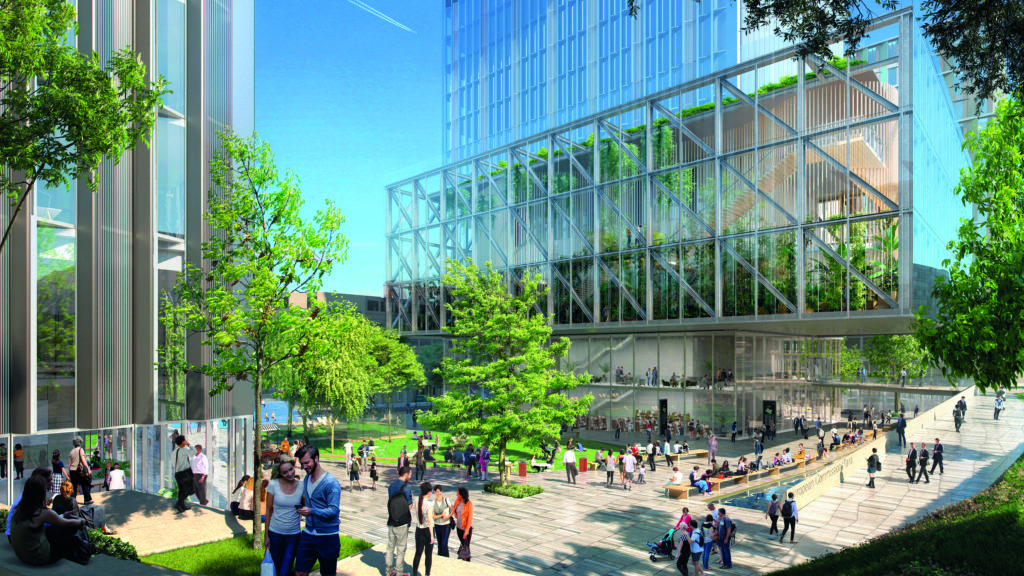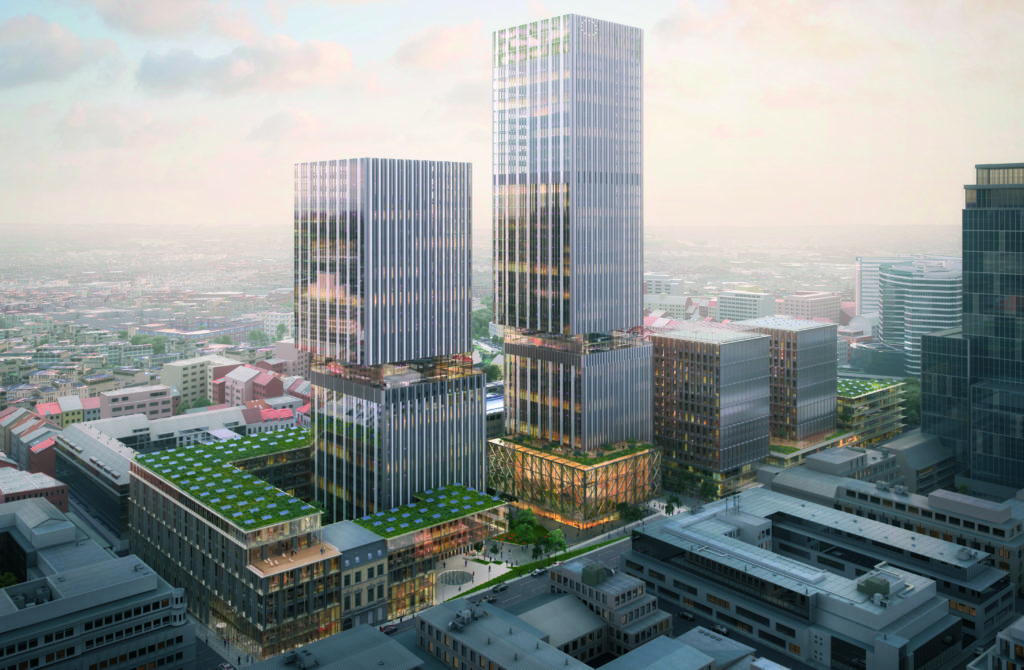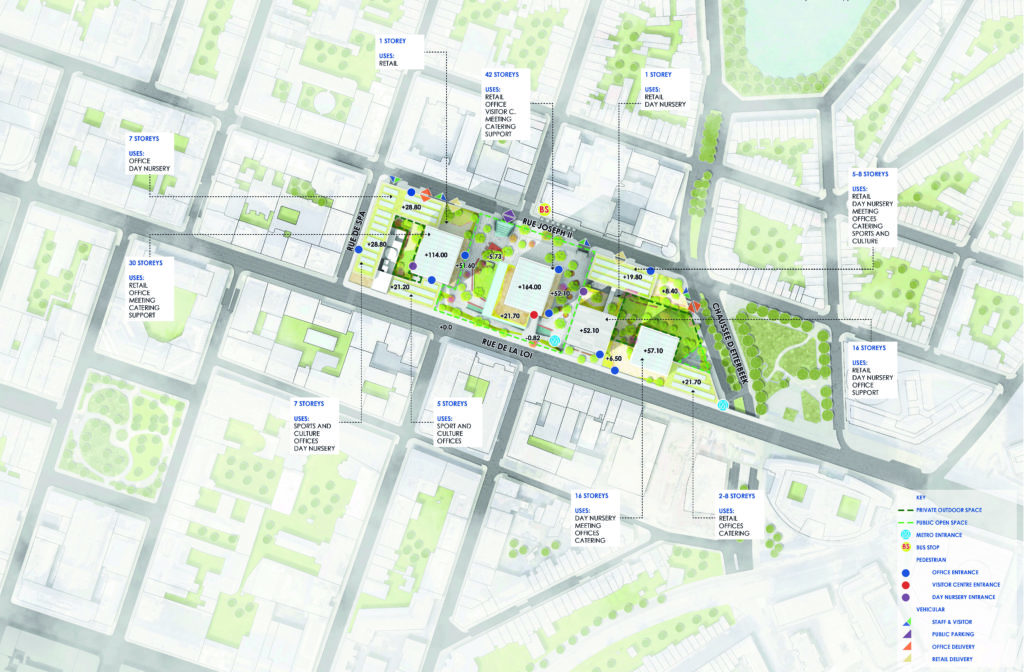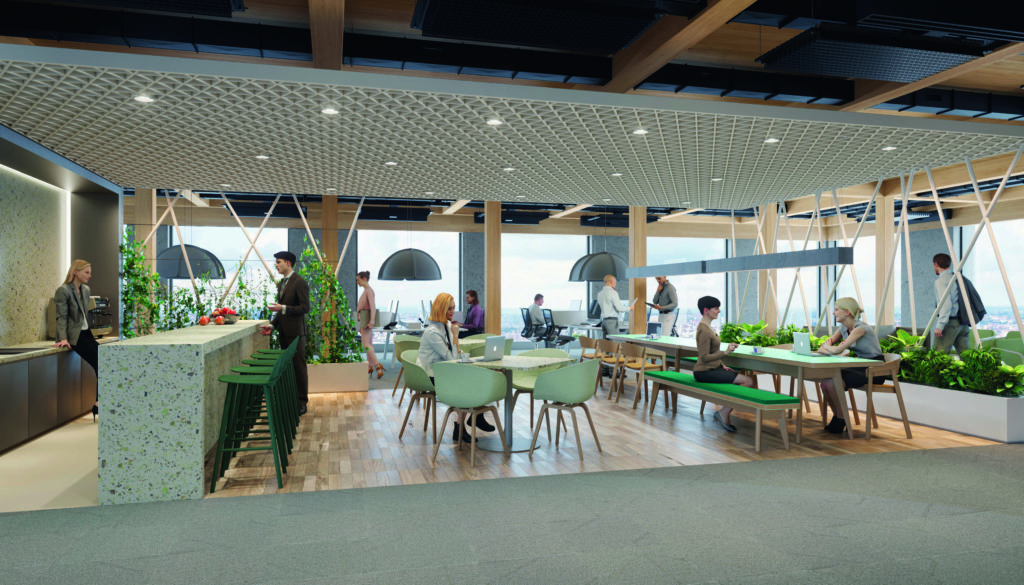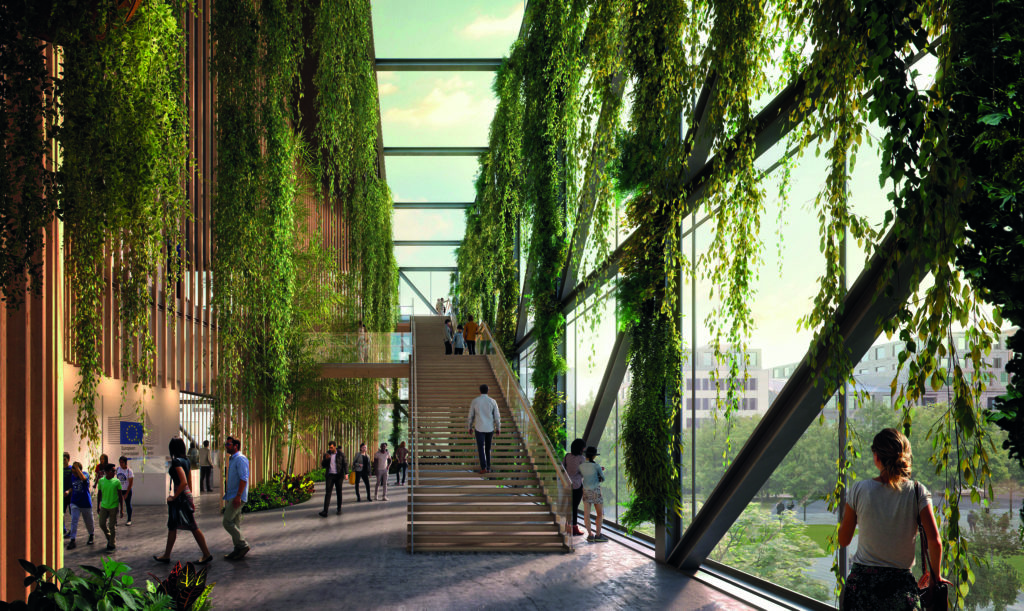Green light for new EU office complex in Brussels
Project applications were submitted by 28 architecture firms around the globe. Designs for the new European Commission office complex were examined, and the winner has been chosen. It is a consortium of five companies from across Europe – with a fascinating concept.
The prizewinners offer a “future-oriented, innovative, sustainable and cost-efficient solution”, according to the statement released by the jury. In the final round there was a “blind” selection between nine shortlisted competitors. The coveted project? Building a new office complex for the European Commission on Rue de la Loi 130 – in the heart of Brussels.
Consortium wins contest
The results of the “Loi 130” international architecture competition, which was launched in 2018, have been published. 1st prize was awarded to a group of planners who all have branches in Europe.
The London office of the international enterprise Perkins+Will UK Limited, Latz + Partner Landscape Architecture Urban Planning from Germany, and the Spanish companies Technica Y Proyectos S.A. and MC2 Estudio de Ingenieria S.L.U will be responsible for the project, led by the Madrid studio Rafael de La-Hoz Arquitectos.
It is a remarkable challenge. The old, inefficient offices in the heart of Brussels will be replaced with modern, environment- and people-friendly buildings. In keeping with the overall cityscape and the other development plans for Brussels as a city. Tailored to the needs of more than 5,000 people who work for the European Commission. The complex will also have plenty of public space, with maximum attraction for the local community and around 345,000 visitors per year.
The project is centred around a permeable route and a public plaza to blend the EU Quarter into its urban environment and allow access to the metro and bus stations. The plans include two childcare centres and a visitor centre, and also 3,000 m² for restaurants and shops, and green public spaces.
Offices with wellness qualities
The office buildings are designed for future viability, in terms of both light incidence and energy efficiency, and also in the interior. Roof gardens and facilities for relaxation and communication aim to create a pleasant working environment. Flexible walls and ceilings that can be adapted to suit staff needs take into consideration unknown factors. These include whether open-plan offices or small units will make most sense in future.
The modern complex and the newly designed area are designed to regenerate the district. They will also improve the quality of life in the city that hosts the EU Commission headquarters. Spanning a total surface area of 175,000 to 190,000 m², the project is currently the most important real estate undertaking in Brussels.
But there’s more. The European Commission has declared that “the most will be made” out of every euro invested. This includes issues such as sustainability and environmental protection.
The new offices designed by the architect consortium are expected to achieve a 50% reduction in CO2 emissions and cut energy consumption by as much as 70% compared to the existing buildings. The European Commission will also save money on necessary renovations and renting alternative space.
From winning project to turf-cutting
The preliminary works come first, though. Choosing the winner of the “Loi 130” architecture competition merely gave the green light for contract negotiations, planning permission and detailed planning. The first construction phase (towards Chaussée d’Etterbeek) is planned to start in 2025. Phase two (towards Rue de Spa) follows on directly after the first phase has finished. The entire project is expected to be completed in 2035.
Text: Elisabeth Schneyder
Translation: Rosemary Bridger-Lippe
Images: Perkins&Will/European Commission
